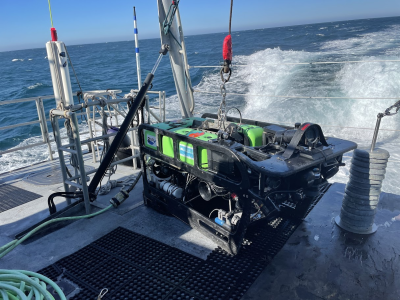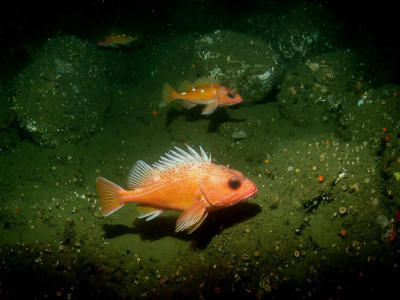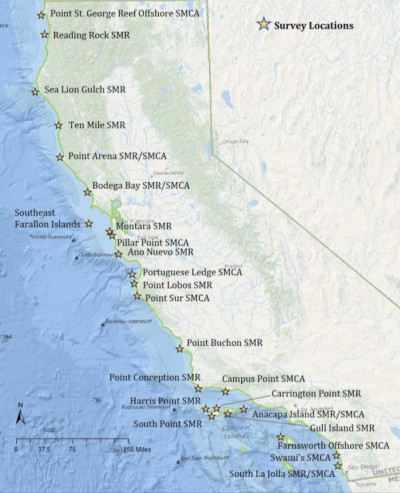PRINCIPAL INVESTIGATORS:
Andrew Lauermann (Marine Applied Research & Exploration)
CO-PRINCIPAL INVESTIGATORS:
Nicholas Perkins (University of Tasmania)
ASSOCIATE INVESTIGATORS: Johnathan Centoni (Marine Applied Research & Exploration), Greta Goshorn (Marine Applied Research & Exploration), Kyle Palmer (Marine Applied Research & Exploration), Samuel Parker (Marine Applied Research & Exploration), Dirk Rosen (Marine Applied Research & Exploration),
PROJECT ADMINISTRATOR: California Sea Grant
PROJECT HIGHLIGHT:
This project will continue to monitor mid-depth rocky reef habitats across California’s Marine Protected Area (MPA) Network using a remotely operated vehicle (ROV). At the conclusion of the study, the project team will provide updated analyses of species abundance, size distributions, and habitat associations across the MPA Network. These outputs will support the state’s adaptive management strategies and contribute to a growing body of scientific knowledge critical to the stewardship of California’s coastal ecosystems.
PROJECT SUMMARY:

This research is part of a larger number of projects conducting long-term monitoring of the California MPA Network, supported by California Ocean Protection Council and California Department of Fish and Wildlife. Drawing on nearly 20 years of data collected between 2005 and 2024, this project will evaluate the Marine Protected Area (MPA) effectiveness at regional and individual site levels throughout California’s north, central and south regions. In addition to tracking species density and size distributions, this work will inform ecological connectivity modeling and assess environmental conditions such as temperature, salinity, and dissolved oxygen.
Using the Beagle, a specially equipped remotely operated vehicle (ROV), surveys will replicate the same methodologies used in the past to ensure consistency. The ROV will collect high-resolution video and stereo imagery and real-time environmental data across pre-defined 500-meter transects in 28 MPAs and associated reference sites. These sites were selected based on historical data and the state’s MPA Monitoring Action Plan. A total of 490 transects will be completed over two years, providing a detailed, statewide view of mid-depth rocky reef habitats. This information is critical to assess and inform marine protected area management.

Data from past surveys have shown clear evidence of MPA benefits and have been validated by the Pacific Fisheries Management Council for use in stock assessments. Maintaining a consistent sampling design allows for reliable long-term trend analysis and ensures that findings are directly comparable across years. This approach reinforces the ability to detect ecological shifts, track species responses to changing environmental conditions and continue to evaluate the effectiveness of MPAs.
At the conclusion of the study, a technical report will be presented offering updated analyses of species abundance, size distributions, and habitat associations across the MPA network. These outputs will support the state’s adaptive management strategies and contribute to a growing body of scientific knowledge critical to the stewardship of California’s coastal ecosystems.
Below is a map of marine protected areas selected for proposed long-term monitoring in 2025 and 2026:
